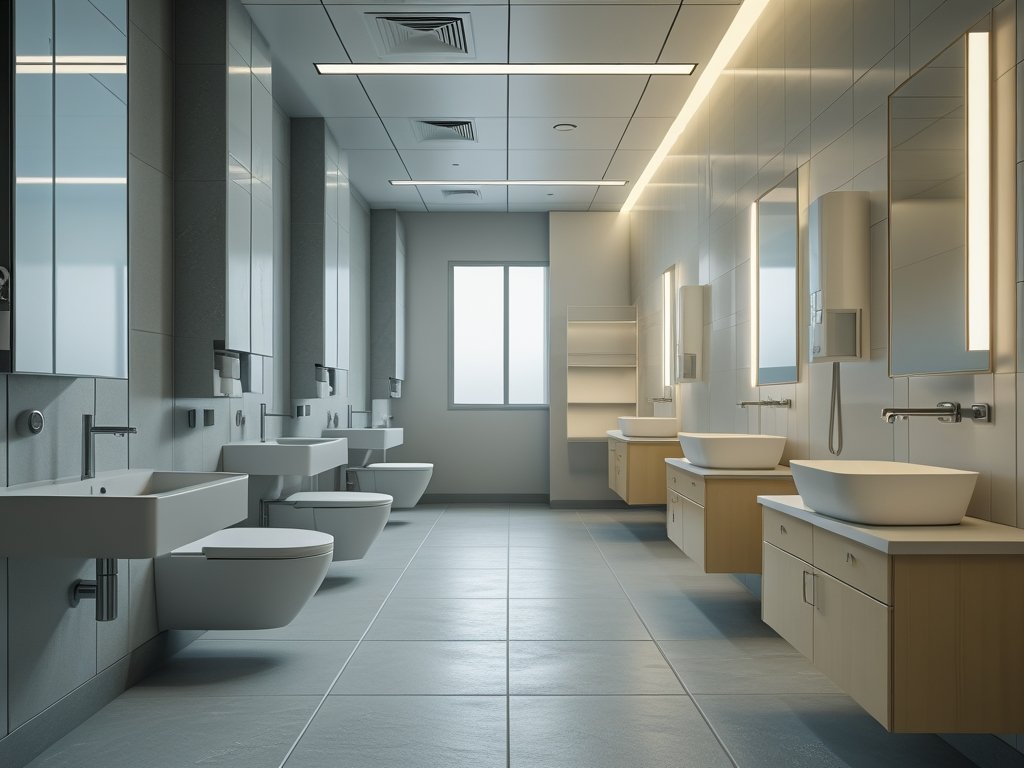Long commutes and extended trips present unique challenges when it comes to personal hygiene and comfort. Often overlooked in travel planning, bathroom breaks become a significant consideration for anyone spending substantial time on the road, whether by car, train, plane, or other means. Failing to adequately plan for these necessities can lead to discomfort, stress, and even disruptions to your journey. This isn’t merely about finding a toilet; it’s about anticipating needs, preparing for unexpected delays, and maintaining a sense of wellbeing while away from the convenience of home. A thoughtful approach to bathroom planning transforms potentially stressful situations into manageable aspects of travel, allowing you to focus on enjoying the experience itself.
The key to successful bathroom planning lies in proactive preparation and realistic expectations. It requires understanding your own physiological needs – frequency of urination, bowel habits, dietary considerations – as well as anticipating potential limitations along your route or during your journey. This means researching facilities, packing appropriate supplies, and having contingency plans for unforeseen circumstances like traffic jams, flight delays, or limited accessibility. Ultimately, it’s about empowering yourself with the resources and knowledge to navigate these situations confidently and comfortably, minimizing disruption and maximizing your travel enjoyment. Considering how you time your meals can also significantly impact bathroom frequency – explore urology meal timing tips for more details.
Essential Pre-Trip Bathroom Considerations
Before even thinking about packing your bags or mapping out your route, a crucial first step is self-assessment. Understand your body and its habits. Are you someone who needs to urinate frequently? Do certain foods or drinks trigger urgency? Knowing these details will heavily influence how often you need to plan stops, what supplies you should pack, and how much liquid you consume before and during your travel. Don’t underestimate the impact of hydration; while staying hydrated is important for overall health, excessive fluid intake can also lead to more frequent bathroom breaks. Finding a balance tailored to your individual needs is paramount.
Beyond personal habits, consider the mode of transportation. A road trip offers greater flexibility in terms of stopping whenever necessary, but relies on available facilities along the way. Public transport – trains, buses, airplanes – often have limited or inconvenient restroom access. Airplane bathrooms are notoriously small and can have long queues. Train travel might offer more spacious restrooms, but availability can still be a concern. Researching what facilities are available is critical. Many airlines now display bathroom locations on their in-flight maps, while train companies provide information about onboard amenities. For road trips, apps like iExit (for the US) or similar regional equivalents can pinpoint rest stops with specific amenities along your route.
Finally, think about potential delays. Unexpected traffic jams, flight postponements, or unforeseen circumstances can significantly extend travel time and increase the need for bathroom access. Always build extra time into your schedule to accommodate these possibilities. This isn’t just about avoiding stress; it’s about ensuring you have adequate opportunities to relieve yourself comfortably without rushing or compromising your wellbeing. A little planning goes a long way in preventing unpleasant situations during prolonged journeys. You can also learn how planning around bathroom access contributes to peace of mind.
Building Your Bathroom Emergency Kit
Having a well-equipped “bathroom emergency kit” is essential, regardless of the length of your commute or trip. This isn’t about anticipating worst-case scenarios so much as being prepared for common inconveniences and ensuring basic hygiene standards are maintained when facilities aren’t readily available. The contents will vary depending on individual needs, but some essentials include:
- Toilet paper: A travel-sized roll or a pack of individually wrapped wipes is non-negotiable. Even if restrooms are available, you can’t always guarantee they’ll be stocked.
- Hand sanitizer: Crucial for maintaining hygiene, especially after using public facilities. Look for alcohol-based sanitizers with at least 60% alcohol content.
- Wet wipes: Versatile for cleaning hands, surfaces, or even as a quick refresh during long journeys. Choose biodegradable options when possible to minimize environmental impact.
- Feminine hygiene products: If applicable, pack an adequate supply of pads, tampons, or menstrual cups.
- Small trash bags: For discreetly disposing of used items.
- Medications: Any necessary personal medications should be readily accessible in your kit.
Consider adding a few comfort items as well, such as travel-sized deodorant, breath mints, or lip balm. These can help you feel refreshed and maintain a sense of wellbeing during long journeys. The goal is to have everything you need to address basic hygiene needs without relying solely on external facilities. Regularly check your kit to replenish used items and ensure it’s always prepared for your next trip.
Navigating Limited Restroom Access
When faced with limited restroom access – a common occurrence in airplanes, trains, or even congested highways – strategic planning becomes even more important. This starts with mindful consumption of fluids before and during travel. Avoid excessive caffeine or alcohol, as these are diuretics that can increase urination frequency. Instead, opt for water or herbal teas, and sip it gradually rather than gulping large amounts at once.
Plan your bathroom breaks around scheduled stops if possible. On a road trip, identify rest areas or gas stations along your route and factor in time to stop at regular intervals. On public transport, utilize any available restroom facilities during layovers or scheduled stops. If you anticipate delays, proactively seek out restrooms before the delay begins – don’t wait until it’s an emergency. For those with specific dietary concerns, understanding urology diet planning can be helpful.
Finally, be prepared for situations where a restroom simply isn’t available when needed. This is where your emergency kit comes in handy. In extreme cases, consider pulling over to a safe location on the side of the road (if driving) or asking if you can use a restroom at a nearby business. Always prioritize safety and discretion. Remember that it’s better to be prepared for these scenarios than to suffer in silence.
Dietary Considerations for Bathroom Comfort
What you eat and drink significantly impacts your bathroom needs during long commutes and trips. Certain foods can exacerbate urgency or cause digestive discomfort, while others can promote regularity and overall wellbeing. Before embarking on a journey, avoid foods known to cause bloating, gas, or diarrhea, such as:
- Spicy foods: Can irritate the digestive system and lead to increased bowel movements.
- Dairy products: If lactose intolerant, dairy can cause bloating, gas, and discomfort.
- Carbonated beverages: Introduce excess gas into the digestive system.
- Artificial sweeteners: Can have a laxative effect in some individuals.
Instead, focus on foods that are easy to digest and promote regularity. Fiber-rich foods like fruits, vegetables, and whole grains can help maintain healthy bowel function. Staying hydrated with water is essential, but as previously mentioned, avoid excessive fluid intake before or during travel. Consider packing healthy snacks like nuts, seeds, or granola bars to keep energy levels stable without causing digestive upset. A mindful approach to diet can significantly enhance your comfort and wellbeing during long journeys. To further refine this, consider reviewing low-irritant snacks for travel.
Ultimately, bathroom planning for long commutes and trips isn’t about avoiding the need to use the restroom altogether; it’s about anticipating needs, preparing accordingly, and minimizing potential disruptions. By combining proactive preparation with realistic expectations, you can transform potentially stressful situations into manageable aspects of travel, allowing you to focus on enjoying the journey itself. Thinking ahead about planning travel meals for urinary safety is also a smart strategy.





















